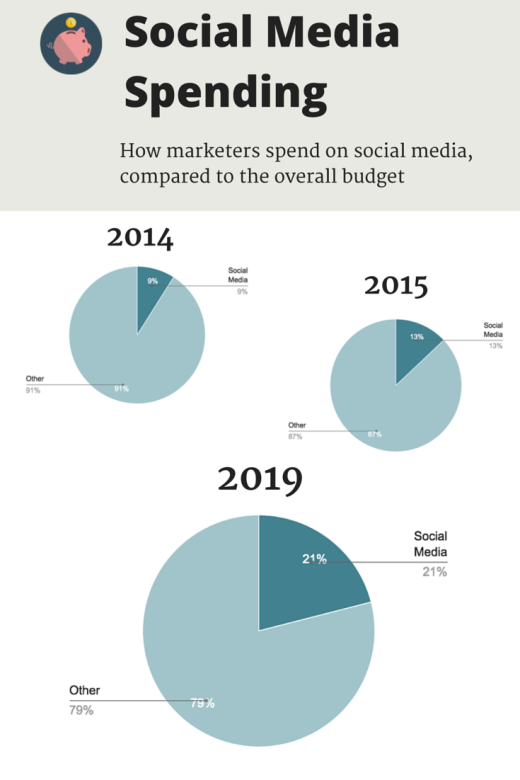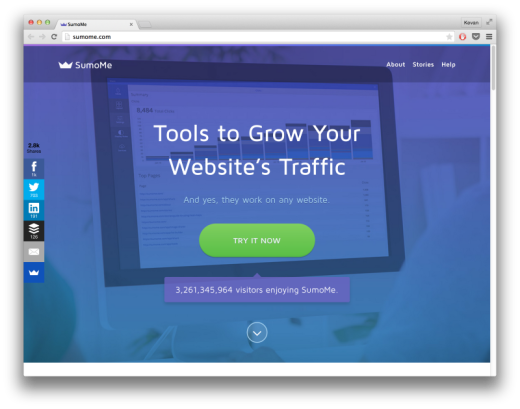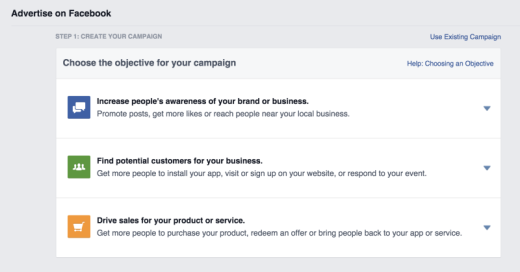
How big is your marketing budget?
I’ve heard of companies that spend millions on marketing. I’ve heard of others who spend zero (we skew toward the zero side at Buffer).
Regardless of how much you spend, you aim to spend it well. That’s why a hypothetical situation like the one here—what would you do with $100 to spend on social media marketing?—can be an extremely valuable exercise.
I have some ideas on what I’d do with the $100, ways to wring the most value out of every penny. I’d love to hear any thoughts you have also (speaking from personal experience even!).
The average marketing budget for social media
Before we get into some answers and ideas, I thought it’d be interesting to see just how much social media takes up in an average marketing budget.
The answer:
The industry average settles between $200 to $350 per day.
This average comes from an analysis by The Content Factory, looking at the cost to outsource social media marketing services. They found that $4,000-$7,000 per month was the industry average, which works out to the above per-day costs.
On a more individual level, a marketing survey by the Duke School of Business found the following:
Results show social media spending is currently nine percent of marketing budgets and is expected to increase to more than 13 percent in the next year. In five years, marketers expect to spend more than 21 percent of their budgets on social media.
How does this compare to you? Are you higher or lower?
At Buffer, our marketing budget consists only of the tools we use (you can see an exact breakdown here). We don’t spend any extra on social media campaigns or advertising, choosing instead to go the content and social media route to get the word out.
Imagine: You have $100 to spend on social media
Plan A: The all-in-one social media budget
One of the first qualifications of spending $100 on social media is that the way you spend is likely to be quite unique: Everyone has their own specific niche and audience to serve, and most social media profiles are at varying degrees of completeness.
With this in mind, I’ve aimed to share some thoughts here that might fit the majority of profiles. Feel free to adjust and correct as needed for your particular situation.
Design/graphics/photos – $40
With visual design carrying such a large emphasis on social media (images are the No. 1 most important factor in optimal social media content, according to an Adobe survey), it feels great to put your best foot forward on the visuals and graphics front.
For social media marketing, this can mean:
- Cover photos for each of your social profiles
- A professional profile picture, either a headshot (if you’re a person) or a logo (if you’re a company)
- Icons and stock photos to use in the images you create for your social media content
We’ve written some fun tutorials on what to do with certain resources—how to turn photos and graphics into ideal social media images. It’s possible that you’ll be able to create these images and spend nothing. There’re tons of great, free tools out there.
If you choose to spend in this area, here’s one direction that your money could go.
- Death to the Stock Photo subscription ($10/month) – You can subscribe to access the full archive of their professional photos plus members-only photo sets
- Fiverr for quick, small designs ($15) – Projects on Fiverr run $5 apiece, if you need a little extra hand with a certain design something. They have a complete section for help with images and logos.
- Add some funds to Creative Market or IconFinder or The Noun Project ($15) – Each of these sites is a digital marketplace for designers to sell the cool things they make. IconFinder and The Noun Project are for icons, with individual icons selling for no more than $2 apiece. Creative Market sells icon sets, website themes, templates, photos, graphics, and tons more.
Advertising/reach – $30
If you’re just starting out and looking to grow your influence on social media, advertising can help build an audience when there is none. Even for established brands it can be a great option.
Social media advertising is a huge topic with lots to consider. Guides like Matthew Kammerer’s are a great place to start.
The takeaway: Test and see what works! Spend $1 per day on Facebook and Twitter for a little advanced exposure.
- Facebook ads ($15) – One dollar per day for a couple weeks. Moz found that $1 per day can grow your audience by 4,000 people.
- Twitter ads ($15) – One dollar per day for a couple weeks. Wordstream put together an interesting comparison chart for Facebook and Twitter ads, showing that your dollar per day might gain you a higher click rate on Twitter yet might get you more views on Facebook.
Social media scheduling – $10
Our top time-saving tip for social media managers is to schedule posts in advance using a tool like Buffer. You can get started for free and share forever to one of each type of connected account—Twitter, Facebook, LinkedIn, Google+, and Pinterest.
If you need more room (or more accounts), the Awesome Plan is just $10/month. With Awesome, you can manage your brand’s accounts plus keep your personal queues full also.
- Buffer for social media scheduling ($10) – Schedule your posts ahead of time, follow up with full analytics afterward. Non-profits get a discount, too, if that might apply for you.
Audience research – Free
One of the key things we’ve learned about social media is that it’s hugely helpful to listen to the people you’re talking with online. What are their needs? Their problems? Their favorite things? A lot of this falls under the umbrella of audience research—finding your audience, engaging with them, and asking them what they’d like to see and hear.
Many elements of audience research can be had for free. If you find one that works well for you, that could be the one worth spending a bit of your $100.
- Followerwonk for Twitter research (free) – Managed by Moz, this tool lets you dig into your Twitter audience: Who are your followers? Where are they located? When do they tweet? The basic version is free, or you can upgrade by snagging a Moz Pro subscription ($99/month)
- Facebook Audience Insights (free) – The robust audience creation tool from Facebook lets you create any sort of target demographic—by region, by age and gender, by interest, by page likes, and more—and shows you the break down of the audience slice you’ve chosen.
- Typeform for surveys (free) – Send out simple surveys with TypeForm to get to know your audience better. It works great to tweet these survey links or post them to social.
Analytics – $10
Your social media dashboard (Buffer, Hootsuite, Sprout Social, etc.) likely has a good deal of analytics already built in. To stay super lean (and cheap), you could stick with these free options and move more of your money into design or advertising. If you’re up for spending a little to learn what’s working on social, here’re some great options, too.
- Chartbeat real-time analytics for your site ($10/month) – Useful for seeing in real-time which visitors on your site have come from social media. Recommended for websites big enough to have multiple people visiting at once.
- SumAll report dashboards and emails (free) – Know what you’re doing well on social media (so you can keep on doing it) by connecting your accounts here and signing up for daily or weekly emails.
Sharing buttons – $10
For your website or blog, you can boost your social media marketing by making it easy for others to share your content. On the Buffer blog, we use the free Digg WordPress plugin. If you’re after something a bit more customizable and premium, one of the following might be a good route to go (each has a free version as well).
Total spend: $100
Plan B: Invest in education
The inspiration for the $100 question came from a post on Inbound.org, asking what you’d do with $1,000 to start an online marketing strategy. (Tons of great answers there, too, if you’re curious!)
One of the takeaways I learned there is that it can sometimes be best to invest your money on educating yourself.
With that in mind, here’re some options for how to spend $100 on social media education.
Great books to read – $60
We’re incredibly grateful for the chance to learn from so many good books. Reading is a bit of a passion of ours (and, I’d guess, maybe yours too?). I read a cool quote from author Ryan Holiday:
I promised myself a long time ago that if I saw a book that interested me I’d never let time or money or anything else prevent me from having it.
It’s great advice, and we’ve taken it a bit to heart here with these book recommendations (books make up a significant part of the $100 budget in this section).
- Tribes by Seth Godin ($12)
- Influence: The Psychology of Persuasion by Robert Cialdini ($11)
- How to Win Friends and Influence People by Dale Carnegie ($11) – A Buffer favorite!
- Jab, Jab, Jab, Right Hook by Gary Vaynerchuk ($15)
- Inbound Marketing by Brian Halligan and Dharmesh Shah ($10)
Helpful ebooks and blogs – $20
- Copyhackers’s ebook: Headlines, Subheads & Value Propositions ($20)
- The 50 most-loved blogs of Buffer readers
- 10 marketing blogs for intermediate and advanced marketers
Great communities to join – Free
Being able to tap into the shared knowledge of a big group of experts or like-minded peers is a huge advantage and privilege. In terms of social media marketing, these few (free) communities have some of the best advice and most knowledgeable participants:
- Inbound.org (free)
- Growth Hackers (free)
- Quibb (free) – A members-only network that shares useful link and news
Miscellaneous resources – Free
- Primer by Google (free)
- Rainmaker.fm podcasts (free)
- Growth.Supply’s list of free social media resources (free)
Total spend: $100
Plan C: Advertising-focused
Let’s say you have a good grip on your social media marketing workflows. You’re in a groove with your scheduling, your content, your followup and reporting. Maybe you’d just like to grow with a little paid promotion and reach.
Here are some options for spending the $100 toward advertising particularly.
Facebook ads – $40
With Facebook, you have many different ways of approaching an ad campaign, and all these ways can typically fall within these three categories of benefits:
- Interaction: Your ad and content right on the homepage allows users to interact with it like they do any other piece of social content.
- Reach: Expand your reach to new potential customers who can interact with your content by commenting, liking, favoriting, retweeting, etc.
- Followers: Brands also report a notable increase in followers through these social advertising options, since brand visibility increases significantly.
(The same goes for Twitter and LinkedIn ads, too.)
For small budgets, you’re likely to get the most bang for your buck with boosting reach. As mentioned above, reach can grow in some cases by as much as 4,000 new people with only $1 per day.
Twitter ads – $40
Like Facebook, Twitter gives you a number of ways to get your content in front of more people. Here’s a list of possible paid routes with Twitter:
- Get more followers
- Get more clicks
- Get more retweets, favorites, replies
- Collect leads
- Drive engagement for your app
Many of these different forms of Twitter advertising have to do with Twitter cards, which are a media-rich version of a standard tweet.
LinkedIn – $20
LinkedIn gives you the option to create an ad (similar to a display ad or a Facebook ad) or to sponsor existing content (similar to boosting a post).
If you’re interested in diving deeper into LinkedIn, Twitter, or Facebook ads, lots more info on social media advertising can be found in our guide.
Total spend: $100
Big-picture ideas on how to spend money
1. Spend your money on what you can’t do well
If you lack a certain expertise in an area, this could be a great signal that it’d be worth it to pay someone else to take over.
2. Spend your money on what takes you the most time
Time is money, as they say. Your time is super valuable, especially if you’re juggling all the many tasks of a social media manager by yourself.
Look at what takes you the most time to do. Can you spend a bit of money to make these processes a bit easier?
3. Spend money in such a way that you can make more money to spend
Especially when you’re first starting out, it’s likely that money might be a bit lean. The idea here is that you’d spend your budget on only those activities that could lead directly to your making more money. If you have $100 to spend, it’d be great to have a way to get $100 to spend again the following month.
Your plan
Over to you: How might you spend $100 on social media marketing?
I’d love to hear your ideas, or maybe even how you’ve spent it in real life, too! Any insights you have would be so great to hear.
Read Next: The complete guide to Medium for marketers
Image credits: Pablo, IconFinder, Death to the Stock Photo, Shutterstock
This post first appeared on Buffer.
Get the TNW newsletter
Get the most important tech news in your inbox each week.












